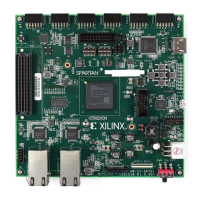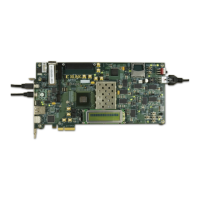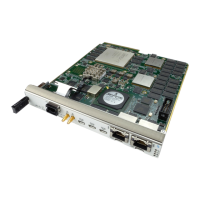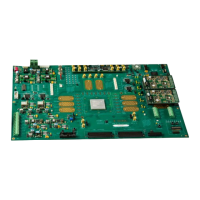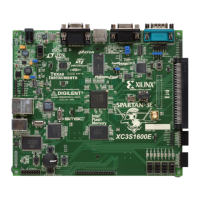196 www.xilinx.com 7 Series FPGAs GTP Transceivers User Guide
UG482 (v1.9) December 19, 2016
Chapter 4: Receiver
Setting Clock Correction Sequences
The clock correction sequences are programmed using the CLK_COR_SEQ_1_* attributes and
CLK_COR_SEQ_LEN. Each CLK_COR_SEQ_1_* attribute corresponds to one subsequence in
clock correction sequence 1. CLK_COR_SEQ_LEN is used to set the number of subsequences to be
matched. If the 40-bit or 20-bit internal datapaths are used, the clock correction circuit matches all
10 bits of each subsequence. If the 16-bit or 32-bit internal datapaths are used, only the right-most
eight bits of each subsequence are used.
A second, alternate clock correction sequence can be activated by setting CLK_COR_SEQ_2_USE
to TRUE. The first and second sequences share length settings, but use different subsequence values
for matching. Set the CLK_COR_SEQ_2_* attributes to define the subsequence values for the
second sequence.
When using 8B/10B decoding (RX8B10BEN is High), CBCC_DATA_SOURCE_SEL is set to
DECODED to search the output of the 8B/10B decoder for sequence matches instead of
non-decoded data. This allows the circuit to look for 8-bit values with either positive or negative
disparity, and to distinguish K characters from regular characters (see TX 8B/10B Encoder, page 83
and RX 8B/10B Decoder, page 170 for details). Figure 4-45 shows how to set a clock correction
sequence byte when RX8B10BEN is High and CBCC_DATA_SOURCE_SEL is set to DECODED.
When CBCC_DATA_SOURCE_SEL is set to ENCODED, the sequence must exactly match
incoming raw data. When RX_DISPERR_SEQ_MATCH is set to FALSE,
CLK_COR_SEQ_x_y[9] is not used for matching.
Some protocols use clock correction sequences with don’t care subsequences. The clock correction
circuit can be programmed to recognize these sequences using CLK_COR_SEQ_1_ENABLE and
CLK_COR_SEQ_2_ENABLE. When the enable bit for a sequence is Low, that byte is considered
matched no matter what the value is. Figure 4-46 shows the mapping between the clock correction
sequences and the clock correction sequence enable bits.
X-Ref Target - Figure 4-45
Figure 4-45: Clock Correction Subsequence Settings with
CBCC_DATA_SOURCE_SEL = DECODED
UG482_c4_27_111011
CLK_COR_SEQ_x_y 9 8 7:0
8-bit Clock Correction Sequence
1 = Sequence is a K Character
0 = Sequence is a Regular Character
1 =
Sequence Uses Inverted Disparity
0 =
Sequence Uses Regular Disparity
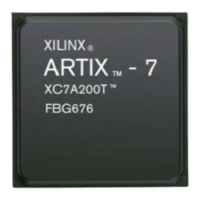
